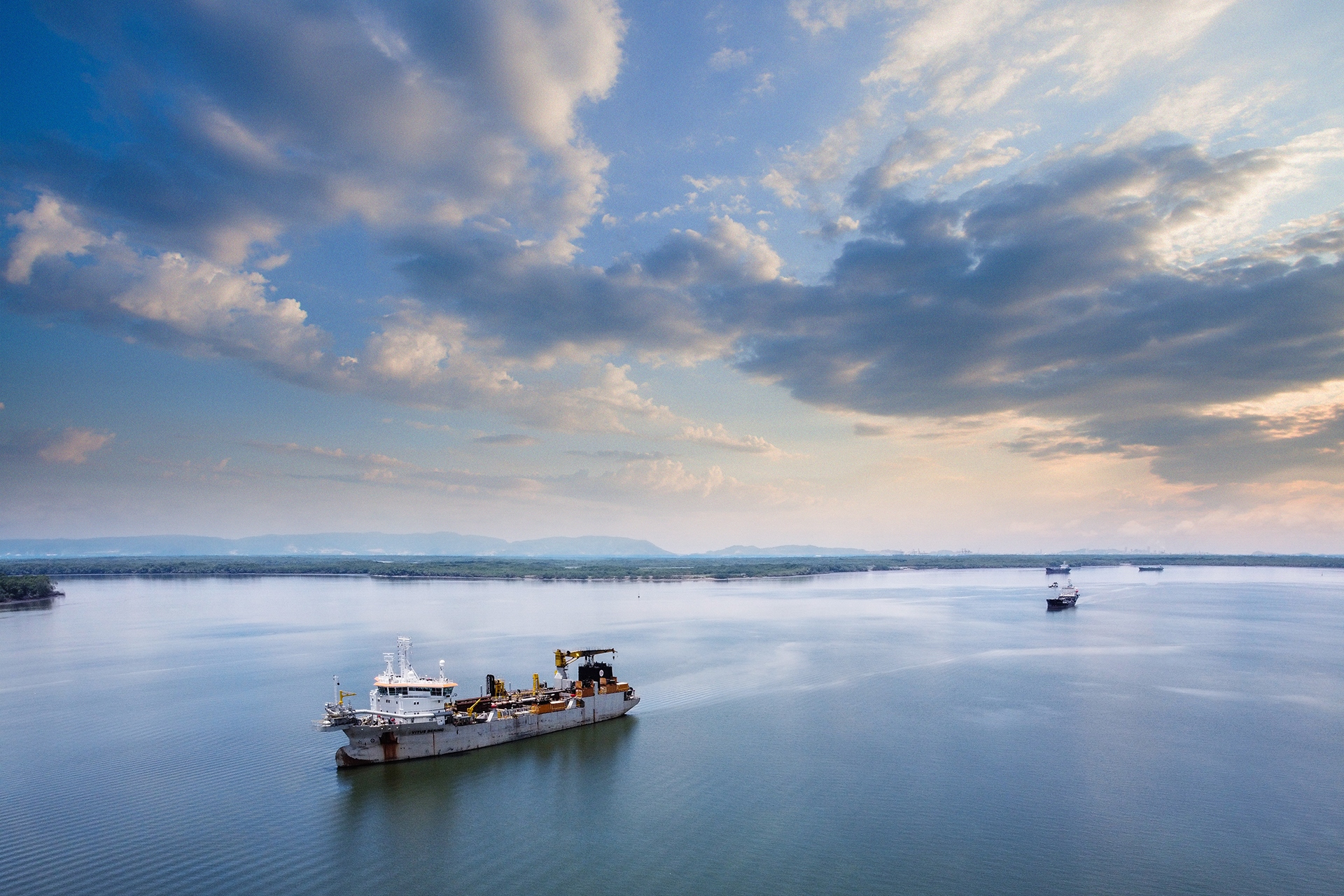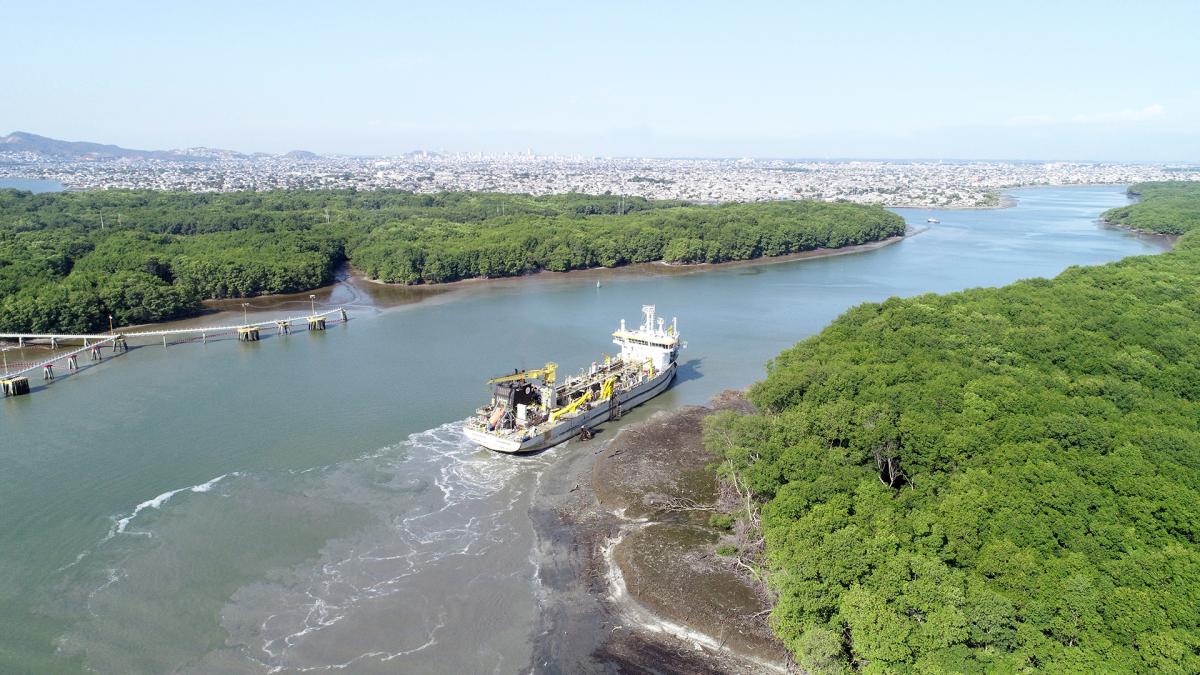Dredging concessions: towards complete outsourcing

Double interview with Dominic De Prins, Project Manager in Ecuador, and Mathias Van De Vijver, Financial Manager.
What in essence is a dredging concession and what type of concessions exist?
Dominic De Prins: "Broadly speaking, it comes down to making and keeping a canal or river navigable. We do the first by deepening the waterway, and the second by keeping a vessel there for long-term maintenance works. Various financing arrangements are possible."
Mathias Van De Vijver: "For some projects, Jan De Nul takes on the financing. The costs for deepening the waterway and maintaining its depth are then repaid with toll fees. Each ship passing through the waterway; for instance, has to pay an amount that depends on the size of the ship. Alternatively, the awarding authority may reimburse us by way of fixed, periodic payments. But intermediate forms, with a combination of fixed payments and toll fees, are also possible."
What advantages does this offer for your clients, and for Jan De Nul itself?
Mathias: "For clients, we offer a long-term solution, without them having to fully finance the works themselves. In this way, governments with a limited budget can still meet the expectations of their population and give the local or national economy a major boost."
Dominic: "For us, it means giving one or more vessels a fixed base of operations over a long period of time. Their first and foremost priority, obviously, will always be the concession assignment, but there can possibly be interim periods working on neighbouring projects. This is interesting for us, as it significantly decreases our mobilisation and demobilisation costs while giving us more visibility in the region."
Our people, fleet and financial health are deciding factors for this type of financing.
Mathias Van De Vijver, Financial Manager at Jan De Nul Group
So what is the other side of the coin?
Mathias: "In a concession formula with toll fees only in return for full financing, there are a lot of risks to factor in. For one thing, we must not only calculate the costs for capital and maintenance dredging works, but also estimate the expected ship traffic during the concession period and the resulting revenues. In some countries, there are also political risks and legal uncertainty to consider. And finally, tender costs are also higher due to the more complex contractual set-up."
Do you usually push for concession agreements yourselves for certain projects?
Dominic: “Yes, we do. In countries with a proper legal framework, we may sometimes take the initiative and submit a proposal ourselves. The first step is then to carry out a pre-feasibility study, which the public authority concerned may or may not approve. If approved, we will carry out a more elaborate feasibility study, paid by the relevant public authority. If that also passes the evaluation, this will lead to a public tender in which various parties may participate, including direct competitors."
Mathias: "An important consideration here is that the party that originally took the initiative has an advantage in the concession tender. They know the risks and opportunities inside out, and have a price advantage in the evaluation procedure. We have already won some great projects through this method."
What other assets can you bring to the table in tenders for dredging concessions?
Mathias: "Thanks to our extensive dredging fleet and experienced teams, we have sufficient resources to invest in a long-term concession project. In addition, our financial health inspires confidence and over the years, we have built up a strong track record when it comes to dredging concessions. That experience also appeals to clients."
A concession means giving one or more vessels a fixed base of operations over a long period of time. It significantly decreases our mobilisation and demobilisation costs.
Dominic De Prins, Project Manager in Ecuador

Project in the picture: Guayaquil, Ecuador
In total, four medium-sized trailing suction hopper dredgers and the cutter suction dredger Ibn Battuta removed about 25 million cubic metres of sediment, as well as hard rock formations. Thanks to the deepened maritime access channel, the port of Guayaquil could welcome a Neo-Panamax vessel for the first time in 2019: the APL Esplanade with a cargo of 14,000 TEU. A historic milestone for the country!
Fluent tolling
Meanwhile, the 25-year maintenance agreement is running as planned. In exchange for guaranteeing its depth, we levy toll fees on all vessels using the access channel. The rate is determined by the gross tonnage of the vessels. The larger the vessel, the higher the fee. Whether or not the vessel is fully loaded does not matter in this regard.
As icing on the cake, we will also install a VTS or Vessel Traffic Service system, that is handed over to the port authorities at the end of the contract term. Such a VTS is similar to a control tower at airports, but then for shipping traffic. This state-of-the-art system will make the management and control of shipping traffic more efficient and safer.
Fluvial canal completed in 2022
Geographically, the project in Guayaquil consists of two waterways: the maritime access channel to the ports in the south of Guayaquil on the one hand, and the fluvial canal, or Guayas River, which provides access to the fluvial port terminals in the southeast of the city, on the other. In January 2022, we also completed the capital dredging works in that fluvial canal in Guayaquil so that ships with a draught of up to 7.5m can now be welcomed. These will be mostly bulk ships, and not container ships, but this intervention too is breathing new life into the local economy.